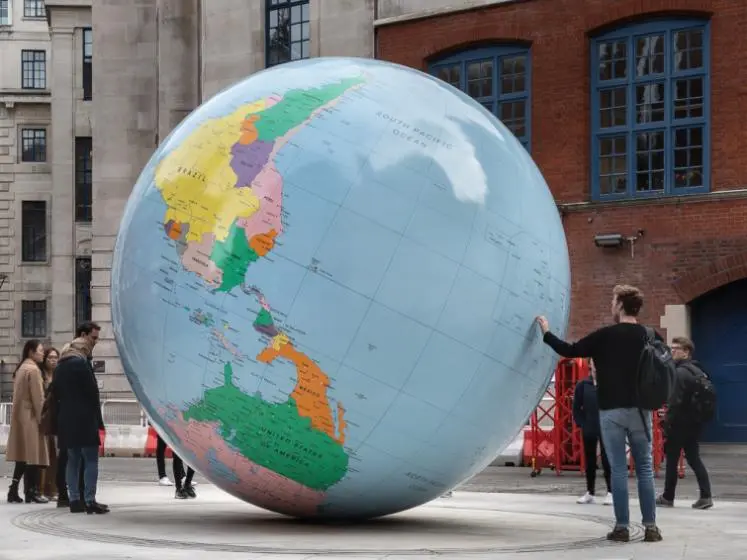Mapping urban sustainability initiatives at LSE and beyond

LSE has published three maps highlighting urban sustainability initiatives both on and within a 15-minute walk of campus.
The maps were created by , a research centre investigating the social, spatial and environmental complexities of the 21st century city. They include a:
- Recycling and Repairs Map
- Green Spaces and Sustainable Mobility Map
- Sustainable Dining and Food Initiatives Map
The LSE Cities Green Impact team 2022/23 consisted of eight staff members covering both research and professional services staff. Additionally, the project hired two student researchers (Sive Lawrie and Raphael Dembo-Shah) to work on the creation of the digital maps, and student volunteers to review and provide feedback on the maps in their earlier forms. The initiative connected LSE staff and students, and the hope is that the wider LSE community will benefit from these sustainability maps.
Dr Alexandra Gomes, a research fellow at LSE Cities and one of the members of the LSE Cities Green Impact team, explains "there are a significant number of urban sustainability initiatives at LSE and in the surrounding areas, but many staff and students are not aware of these projects. While resources exist on the LSE Sustainability website, they are limited to campus and do not engage with potential resources and initiatives in the wider community and the city.
"This lack of awareness restricts the potential impact of these initiatives and hinders joined-up actions between sustainability groups. This project aims to bring these initiatives together into three complementary maps, focusing on sustainable efforts within a 15-minute walking radius of the campus.
"As a research centre dedicated to studying Cities and their sustainable development, we are enthusiastic about addressing the larger challenges related to consumption and helping reduce LSE’s environmental impact and waste. The LSE Cities Green Impact team’s goal is to make the sustainable networks in place around LSE more visible as these networks often operate beneath the surface. We thought mapping was an ideal tool for achieving this, as it aligns with LSE Cities' interest in visual communication and mapping skills and allows us to better engage with the wider LSE community."
Sive Lawrie, one of the student researchers, shares their experience:
"I got involved with the Green Impact project at LSE Cities in March 2023. It has been so much fun to work with, and learn from, the many amazing people at LSE Cities over the past few months. I was also incredibly fortunate to be working with Raphael (another undergraduate in the Department of Geography and Environment).
"Essentially, the part of the Green Impact project that Raphael and I were working on was mapping sustainable initiatives on and around the LSE campus. I was responsible for researching and creating a map to show how waste could be recycled or disposed of in an environmentally responsible way.
"I hope this map, and the other two, will encourage and support the LSE community on our journey to becoming more environmentally friendly!"
To find out more about sustainability at LSE and read relevant news and updates, please visit our Sustainability webpage.